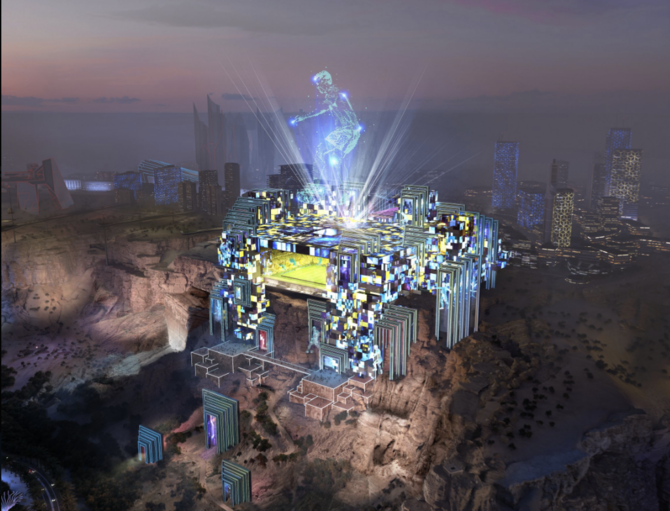
- ARAB NEWS
- 18 Jul 2025

Riyadh: The new Prince Mohammed bin Salman Stadium planned for Qiddiya, 40 minutes from Riyadh, is set to have some of the world’s most advanced technology that will equip it to host sports, entertainment and cultural events all year.
The board of the Qiddiya Investment Company announced on Monday the launch of the new stadium, which will be named after Saudi Arabia’s crown prince.
It is being built at an elevation of 200 meters in the Tuwaiq Mountains.
The Prince Mohammed bin Salman Stadium is also likely to host some games of the 2034 FIFA World Cup, but can be used for other sports including rugby, boxing, mixed martial arts and gaming.
Among its unique features will be a foldable and retractable ground, ceiling, and upper wall, enabling one side to open and provide a view of the lower part of the city, which includes iconic attractions such as the six flags of Qiddiya and the water park.
Discover the Prince Mohammed bin Salman Stadium, a venue like nowhere else on earth, coming to #QiddiyaCity ⚽️🎵🎪#PlayLife pic.twitter.com/L16N98MVUa
— Qiddiya (@qiddiya_en) January 15, 2024
Additionally, the external frame of the stadium and some of its internal walls and roof will be covered with a record number of display screens measuring 1.5 km in length, providing visitors with an immersive experience.
It will also feature an advanced climate-control system that allows events and competitions to take place year-round without consuming large amounts of energy.
This will be achieved by creating an environmentally friendly lake directly beneath the stadium, where rainwater is collected and pumped into an ice wall, cooling the indoor air.